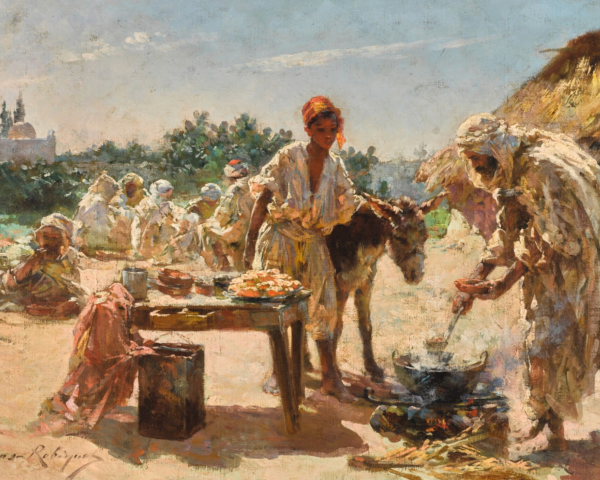
Dreams and Journeys: Revisiting Orientalism brings together a selection of artworks that demonstrate technical skill, creative vision, and diverse approaches to depicting the cultures and landscapes of the Middle East and North Africa.
Opening on Tuesday 28 October 2025 at Colnaghi London, Dreams and Journeys: Revisiting Orientalism examines the sustained interest of American, British, and European artists in the people, places, and cultures of the Arabian Peninsula, the Levant, North Africa, and Anatolia during the 19th century. This field of art and topographical study continues to engage scholars and collectors, reflecting a broader fascination with how these regions were represented and imagined.
The exhibition brings together a selection of paintings and drawings, with plans for the show to travel to the Middle East for a second presentation. Colnaghi first developed a department dedicated to Islamic, Indian, and 19th-century Orientalist art in the 1970s under Jacob Rothschild, and this marks the first new exhibition in this area for over fifty years. A bilingual catalogue in Arabic and English accompanies the show.
When Napoleon’s army entered Egypt in 1798, the campaign was accompanied by scholars, scientists, archaeologists, and artists whose documentation of Egyptian civilisation helped shape European ideas about the region. The Orientalist movement that followed reflected both artistic and intellectual curiosity—an effort to visualise and interpret the cultures of the East from a Western perspective.
The artists represented in this exhibition come from America, France, Spain, Germany, Italy, England, Scotland, and Sweden, spanning the late eighteenth to early twentieth centuries. Some travelled extensively through North Africa and the Ottoman world, while others relied on imagination and studio reconstructions. Artists such as Alberto Pasini (1826–1899) and Jean-Léon Gérôme (1824–1904) documented the architecture and daily life they observed with great precision. Others, including J.M.W. Turner (1775–1851) and Jules Lefebvre (1836–1911), evoked these subjects through atmospheric and idealised imagery. Collectively, the works in Dreams and Journeys reveal how the Orient was understood both as a geographical reality and as a cultural construct shaped by Western artistic interpretation.